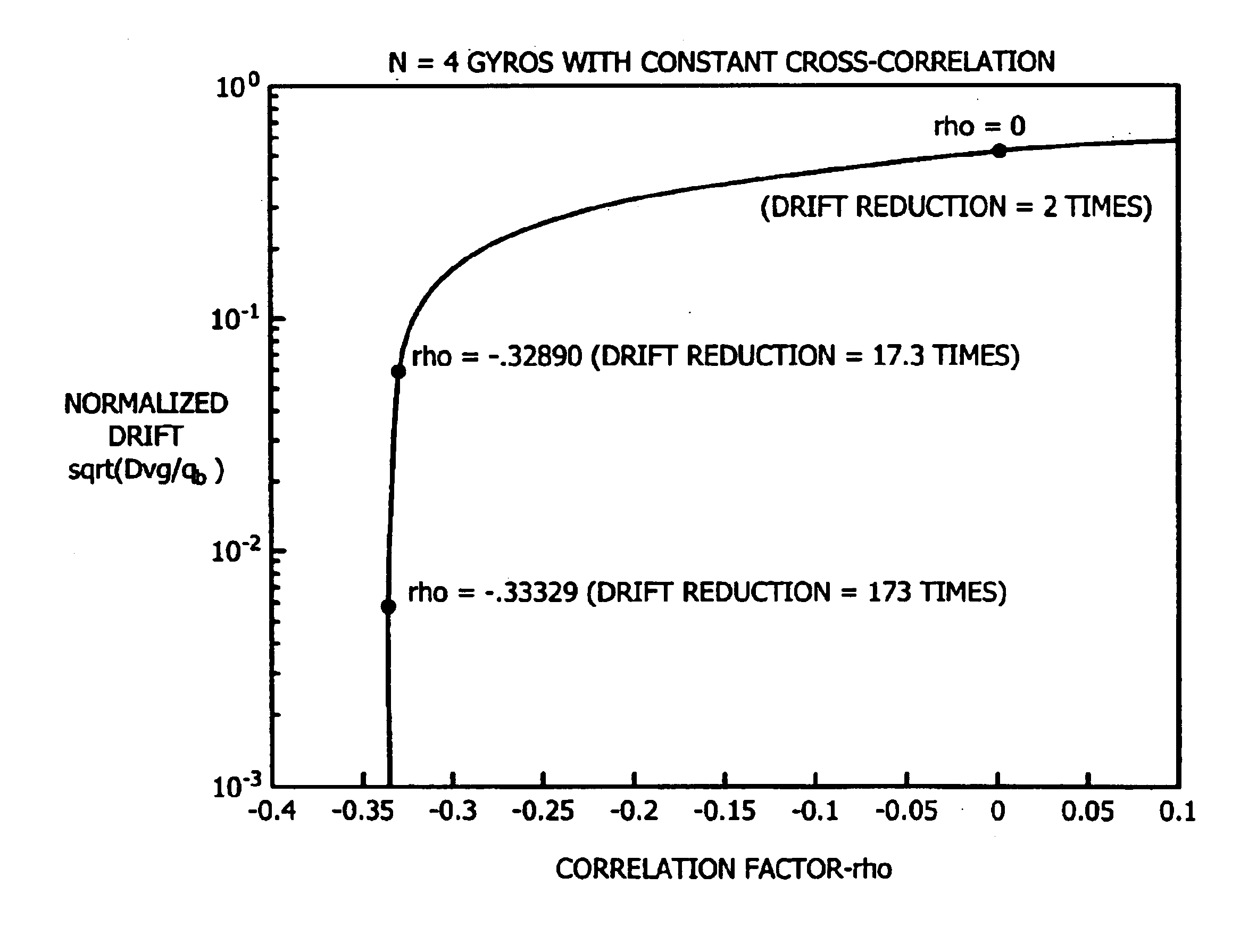High accuracy inertial sensors from inexpensive components
a technology of inertial sensors and components, applied in the field of gyroscopic instruments, can solve the problems of low-grade performance of state-of-the-art mems devices and cannot compete with established sensors in such high-accuracy application areas, and achieve the effects of a wider range of applications, a potentially better collective performance, and a wide range of applications
- Summary
- Abstract
- Description
- Claims
- Application Information
AI Technical Summary
Benefits of technology
Problems solved by technology
Method used
Image
Examples
examples
[0073]Some simulation examples will demonstrate the virtual gyro implementation using the optimal digital filter depicted in FIG. 3. All simulations use N=4 gyros, with a sampling rate of T=1 sec, and a total running time of 400,000 secs (approximately 111 hours). The three examples correspond to the choices of the cross correlation factor ρ being set equal to 0; −0.32890; and −0.33329 where it is assumed that all gyros have constant cross-correlation factor ρ. The normalized virtual gyro drift can be calculated by setting N=4 in (5.10) to yield a theoretical expression that predicts that a perfect driftless virtual gyro is obtained in the limit as the correlation factor ρ approaches −⅓. The choices of p are intentionally chosen to successively approach this limiting value. They are plotted in FIG. 4 with a “*”, which shows the normalized virtual gyro drift versus −ρ and the expected drift reduction for each case. Specifically, the expected improvement for each of the choices of ρ c...
PUM
 Login to View More
Login to View More Abstract
Description
Claims
Application Information
 Login to View More
Login to View More - R&D
- Intellectual Property
- Life Sciences
- Materials
- Tech Scout
- Unparalleled Data Quality
- Higher Quality Content
- 60% Fewer Hallucinations
Browse by: Latest US Patents, China's latest patents, Technical Efficacy Thesaurus, Application Domain, Technology Topic, Popular Technical Reports.
© 2025 PatSnap. All rights reserved.Legal|Privacy policy|Modern Slavery Act Transparency Statement|Sitemap|About US| Contact US: help@patsnap.com



